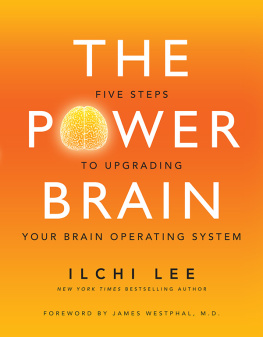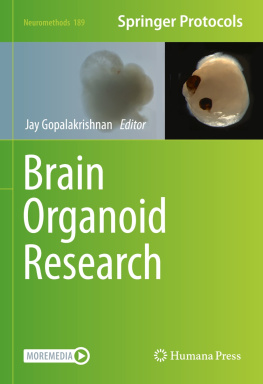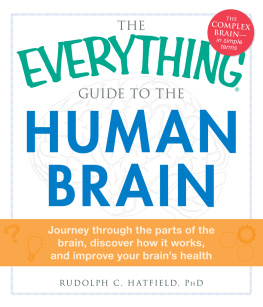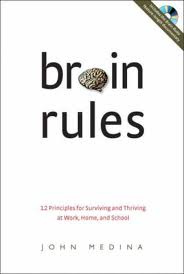Andrey S. Bryukhovetskiy - Human Brain Theory: Information-commutation Device of the Brain and Principles of Its Work and Modeling
Here you can read online Andrey S. Bryukhovetskiy - Human Brain Theory: Information-commutation Device of the Brain and Principles of Its Work and Modeling full text of the book (entire story) in english for free. Download pdf and epub, get meaning, cover and reviews about this ebook. year: 2016, publisher: Nova Science Pub Inc, genre: Romance novel. Description of the work, (preface) as well as reviews are available. Best literature library LitArk.com created for fans of good reading and offers a wide selection of genres:
Romance novel
Science fiction
Adventure
Detective
Science
History
Home and family
Prose
Art
Politics
Computer
Non-fiction
Religion
Business
Children
Humor
Choose a favorite category and find really read worthwhile books. Enjoy immersion in the world of imagination, feel the emotions of the characters or learn something new for yourself, make an fascinating discovery.

- Book:Human Brain Theory: Information-commutation Device of the Brain and Principles of Its Work and Modeling
- Author:
- Publisher:Nova Science Pub Inc
- Genre:
- Year:2016
- Rating:3 / 5
- Favourites:Add to favourites
- Your mark:
- 60
- 1
- 2
- 3
- 4
- 5
Human Brain Theory: Information-commutation Device of the Brain and Principles of Its Work and Modeling: summary, description and annotation
We offer to read an annotation, description, summary or preface (depends on what the author of the book "Human Brain Theory: Information-commutation Device of the Brain and Principles of Its Work and Modeling" wrote himself). If you haven't found the necessary information about the book — write in the comments, we will try to find it.
Andrey S. Bryukhovetskiy: author's other books
Who wrote Human Brain Theory: Information-commutation Device of the Brain and Principles of Its Work and Modeling? Find out the surname, the name of the author of the book and a list of all author's works by series.
Human Brain Theory: Information-commutation Device of the Brain and Principles of Its Work and Modeling — read online for free the complete book (whole text) full work
Below is the text of the book, divided by pages. System saving the place of the last page read, allows you to conveniently read the book "Human Brain Theory: Information-commutation Device of the Brain and Principles of Its Work and Modeling" online for free, without having to search again every time where you left off. Put a bookmark, and you can go to the page where you finished reading at any time.
Font size:
Interval:
Bookmark:
 NEUROSCIENCE RESEARCH PROGRESSHUMAN BRAIN THEORYINFORMATION-COMMUTATION DEVICEOF THE BRAIN AND PRINCIPLES OFITS WORK AND MODELING No part of this digital document may be reproduced, stored in a retrieval system or transmitted in any form or by any means. The publisher has taken reasonable care in the preparation of this digital document, but makes no expressed or implied warranty of any kind and assumes no responsibility for any errors or omissions. No liability is assumed for incidental or consequential damages in connection with or arising out of information contained herein. This digital document is sold with the clear understanding that the publisher is not engaged in rendering legal, medical or any other professional services. NEUROSCIENCE RESEARCH PROGRESS Additional books in this series can be found on Novas website under the Series tab.
NEUROSCIENCE RESEARCH PROGRESSHUMAN BRAIN THEORYINFORMATION-COMMUTATION DEVICEOF THE BRAIN AND PRINCIPLES OFITS WORK AND MODELING No part of this digital document may be reproduced, stored in a retrieval system or transmitted in any form or by any means. The publisher has taken reasonable care in the preparation of this digital document, but makes no expressed or implied warranty of any kind and assumes no responsibility for any errors or omissions. No liability is assumed for incidental or consequential damages in connection with or arising out of information contained herein. This digital document is sold with the clear understanding that the publisher is not engaged in rendering legal, medical or any other professional services. NEUROSCIENCE RESEARCH PROGRESS Additional books in this series can be found on Novas website under the Series tab.  NEUROSCIENCE RESEARCH PROGRESSHUMAN BRAIN THEORYINFORMATION-COMMUTATION DEVICEOF THE BRAIN AND PRINCIPLES OFITS WORK AND MODELINGANDREY S.
NEUROSCIENCE RESEARCH PROGRESSHUMAN BRAIN THEORYINFORMATION-COMMUTATION DEVICEOF THE BRAIN AND PRINCIPLES OFITS WORK AND MODELINGANDREY S.  NEUROSCIENCE RESEARCH PROGRESS HUMAN BRAIN THEORY INFORMATION-COMMUTATION DEVICE OF THE BRAIN AND PRINCIPLES OF ITS WORK AND MODELING ANDREY S.
NEUROSCIENCE RESEARCH PROGRESS HUMAN BRAIN THEORY INFORMATION-COMMUTATION DEVICE OF THE BRAIN AND PRINCIPLES OF ITS WORK AND MODELING ANDREY S.
BRYUKHOVETSKIYNew York Copyright 2016 by Nova Science Publishers, Inc. All rights reserved. No part of this book may be reproduced, stored in a retrieval system or transmitted in any form or by any means: electronic, electrostatic, magnetic, tape, mechanical photocopying, recording or otherwise without the written permission of the Publisher. We have partnered with Copyright Clearance Center to make it easy for you to obtain permissions to reuse content from this publication. Simply navigate to this publications page on Novas website and locate the Get Permission button below the title description. This button is linked directly to the titles permission page on copyright.com. Alternatively, you can visit copyright.com and search by title, ISBN, or ISSN.
For further questions about using the service on copyright.com, please contact: Copyright Clearance Center Phone: +1-(978) 750-8400 Fax: +1-(978) 750-4470 E-mail: info@copyright.com. NOTICE TO THE READER The Publisher has taken reasonable care in the preparation of this book, but makes no expressed or implied warranty of any kind and assumes no responsibility for any errors or omissions. No liability is assumed for incidental or consequential damages in connection with or arising out of information contained in this book. The Publisher shall not be liable for any special, consequential, or exemplary damages resulting, in whole or in part, from the readers use of, or reliance upon, this material. Any parts of this book based on government reports are so indicated and copyright is claimed for those parts to the extent applicable to compilations of such works. Independent verification should be sought for any data, advice or recommendations contained in this book.
In addition, no responsibility is assumed by the publisher for any injury and/or damage to persons or property arising from any methods, products, instructions, ideas or otherwise contained in this publication. This publication is designed to provide accurate and authoritative information with regard to the subject matter covered herein. It is sold with the clear understanding that the Publisher is not engaged in rendering legal or any other professional services. If legal or any other expert assistance is required, the services of a competent person should be sought. FROM A DECLARATION OF PARTICIPANTS JOINTLY ADOPTED BY A COMMITTEE OF THE AMERICAN BAR ASSOCIATION AND A COMMITTEE OF PUBLISHERS. Library of Congress Cataloging-in-Publication Data ISBN: 978-1-63484-767-4 (eBook) Published by Nova Science Publishers, Inc. Library of Congress Cataloging-in-Publication Data ISBN: 978-1-63484-767-4 (eBook) Published by Nova Science Publishers, Inc.
New YorkCONTENTSAuthor's Contact InformationIndexFOREWORD The reviewed text is absolutely original and the authors spirit hovers at such a height of integrative speculations that any attempts to juxtapose it with previous individual or team generalizations would be unproductive. The author is original and inimitable regarding his key idea; though some of the European and American projects exhibit vertical integrative approaches top-down from global concepts to important details, Andrey Bryukhovetskiy resolutely turns away from the approach in neurobiology nicknamed as dictatorship of details. Thank you for the book, for the text, for the project of the Authors Spirit (what else can it be called?). I am grateful to the author for his courage to climb the Everest of our knowledge and guesses of the edges, limits and balance between CNS cells and higher integral tissue, which is more than just nervous cells (an important and correct supposition). I would like to keep within the frames of the biological positivism that unites me with the author at different platforms of creativity. First of all, about the author.
His Spirit reached inestimable thresholds. He, like Joseph Brodsky, achieved milestones in our field; the level of his predictions is invaluable for experts: biologists, neurophysiologists, masters of art and philosophy. But he is knocking at a new door, behind which biology needs new criteria and a new vision of metaphors and predictions. Quantitative measuring remains far behind. The cognitive demands and criteria of the author have reached new bounds; his higher positive language does not search for new proofs in old stables. The author is trying to enter a new door, behind which new paradigms and a new panoramic vision are requisite for positive metaphors and predictions.
The language of quantitative evidence in the scale of brain micromodels was left far behind as it is not suited for the leaps of integrative knowledge. The author proposes bringing a new order to the knowledge. The method for the globalization of organization and the main codes of brain is revised here. The blanks are explained by the gaps in the knowledge of tissue modules of the brain (regional vascularized tissues, meninges, CSF spaces all heterogeneous tissue environments between organs of senses and neural networks). I would like to make small additions that have appeared as a response to the book. In the 1960s a great geneticist from St.
Petersburg, Mikhail Lobashev, offered the term signal heredity to escape from the first pages of the vegetative biology of cells to the world of our sensory organs. First, it seems to me that the brain is the factory in which the flows of audial, visual and intellectual information are manipulated. The epigenetics of signal systems of viii Vadim Repin nervous cells is associated with local micro-environment obligatorily through multiple functional statuses of the cells and tissues to catalogue all brain signals depending on their origin and functions (as in the immune system). Second, the novelty and organized behavior of the cells are absent without sense (semantic) information. All immune and neural memory is derived from epigenetics, a huge molecular machine that codes the memory of single cells and whole circuits. New epigenetic memories develop due to the erosion of previous ones, and this is one of the most energy consuming projects.
Ontogenetic competition and the selection of current/operative or long term memories are the basic script for survival in the information-abundant context. In our epoch of evolution, the main semantic motivation goals dominate in ontogenesis in the formation of new emergent creative behavior, which merely cancels primitive competition in Darwins college of survival. The technologies of creativity avoid the word us of the crowd antagonism. All basic instincts stop being driving engine for the creative vision of motivation. As in religion, a new scale of priorities rules social psychology and the new counter-adaptive collective behavior. Other functions of CNS, outside the epicenter of global novelty generation, outside epigenetics, creative existence and breakthroughs, stay inactive in our times.
Next pageFont size:
Interval:
Bookmark:
Similar books «Human Brain Theory: Information-commutation Device of the Brain and Principles of Its Work and Modeling»
Look at similar books to Human Brain Theory: Information-commutation Device of the Brain and Principles of Its Work and Modeling. We have selected literature similar in name and meaning in the hope of providing readers with more options to find new, interesting, not yet read works.
Discussion, reviews of the book Human Brain Theory: Information-commutation Device of the Brain and Principles of Its Work and Modeling and just readers' own opinions. Leave your comments, write what you think about the work, its meaning or the main characters. Specify what exactly you liked and what you didn't like, and why you think so.










